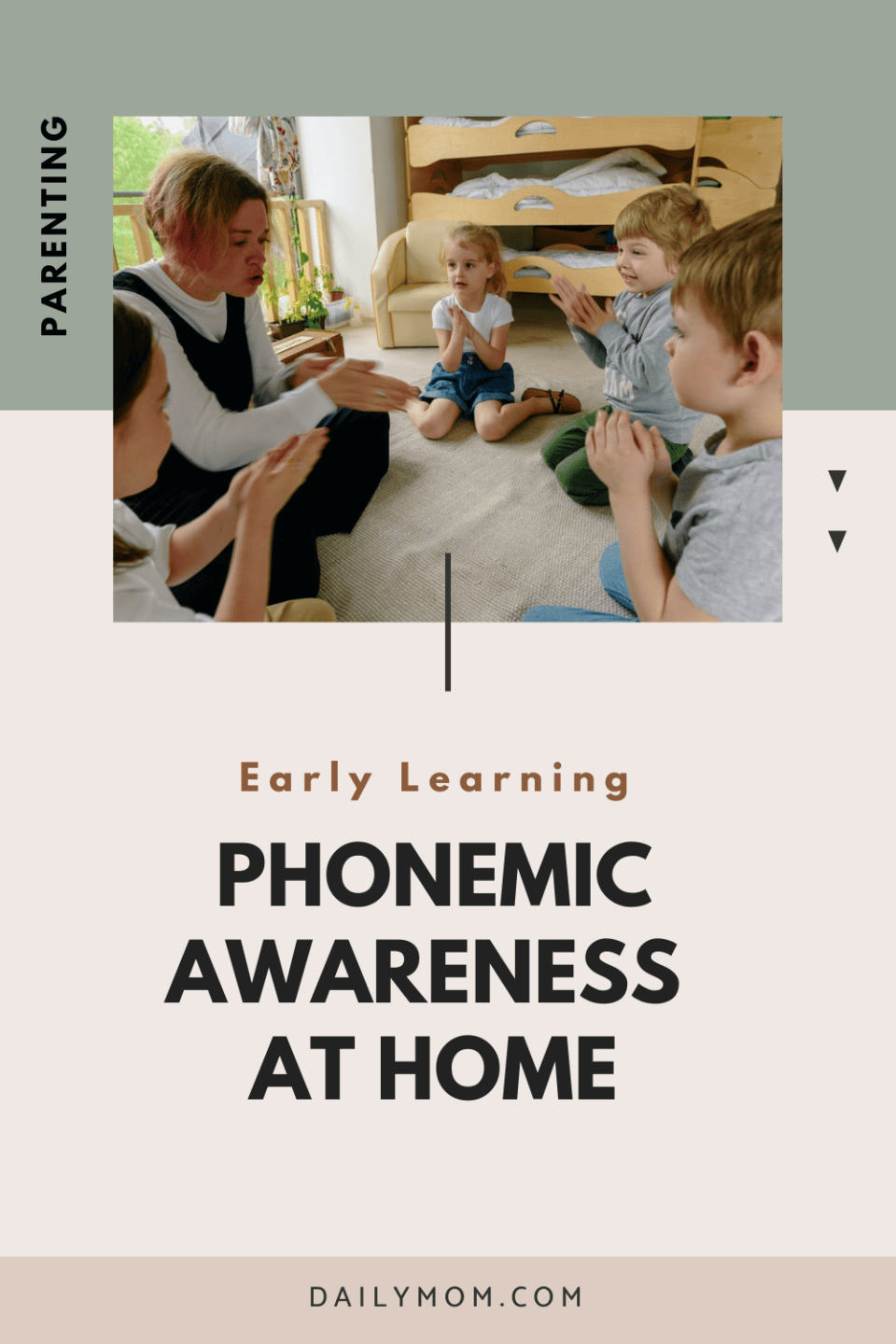As early as kindergarten, most children begin the process of learning to read. In order to do that with ease, they must develop phonemic awareness, which is something you can do at home long before your child starts school.
So what is phonemic awareness? The term itself may sound less-than-exciting, but cultivating phonemic awareness in your child will be the most fun you’ll have with your child all day! So let’s talk about phonemic awareness—what it is and why it’s a game-changer for your kiddo’s reading journey.
WHAT IS PHONEMIC AWARENESS?
Phonemic awareness is like a secret decoder ring for reading and writing. It’s all about recognizing and manipulating the individual sounds, or phonemes, that make up words. Imagine your child has a magical ear that can catch distinct sounds in words, whether they’re spoken or written.
When kids grasp this concept, they’re equipped with an essential skill that forms the foundation of reading, particularly when they learn to read with phonics. (If your child isn’t learning to read with phonics, it’s doubly important they develop phonemic awareness so they can identify patterns in words without direct instruction on how to do so.)
READ MORE: 11 Of The Best Kids Learning Apps

Think of phonemic awareness as the starting point of reading readiness. It’s like teaching your child the ABCs of sounds before advancing to the ABCs of letters. When kids can identify and manipulate sounds in spoken words, they’re more likely to become strong readers and spellers. Recognizing sound/letter associations helps your child break down words into smaller parts, which is crucial for understanding how words are formed and how they’re pronounced.
FUN AND ENGAGING PHONEMIC AWARENESS ACTIVITIES
To create phonemic awareness in your child, it’s helpful to integrate learning into a variety of modalities: body movements, tongue twisters, scavenger hunts—you get the picture!
Start by choosing a Sound of the Day and draw it on posterboard for reference throughout the day. For our activities below, let’s pretend the Sound of the Day is the sound of the letter ‘b.’
- Ask your child to find 10 items in the room that begin with the letter ‘b.’ Throughout the day, point out objects that begin with the Sound of the Day.
- Create a scavenger hunt. Hide 5 objects that begin with the letter ‘b.’ Create clues to read aloud to your child, using the Sound of the Day as many times as you can. For example: “The blue ball is hiding where Baby Bobby sleeps. B-b-b-b.” (Be sure and repeat the sound at the end of each clue.)
- Make up songs that use the Sound of the Day. “Baby Bobby has a blanket. Baby Bobby has a ball. Baby Bobby blows bubbles!” Make up a silly tune, and practice the song with your child, emphasizing the sound of the letter ‘b’ each time. Bonus points if the song is about your child; they’ll want to make up verses all day long!

- With colored chalk, draw pictures on the sidewalk, driveway, or blacktop of items that start with the Sound of the Day. Let your child add to your list and keep drawing. Cover the driveway and have fun with it!
- Pick a variety of phrases that have repetitive sounds in them, then act out the phrases or make up a dance. Here are some phrases for you to try: Buzzing Bumble Bee, Silly Sister Sally, Running Round Rose (or Ring-a-round the Rosy!), Goofy Galloping Gary, Merry-Making Melanie, Lazy Little Lizard, Darling Dancing Dog…be creative!
These 5 activities will get you started, but once you become accustomed to noticing sounds and pointing them out to your child, you’ll have no trouble coming up with phonemic awareness activities on your own.
READ MORE: Getting Kids to Read More for Fun—7 Tempting Ideas!
You’ll also start to notice that practicing phonemic awareness is happening all the time in your child’s world: on educational television, in children’s songs, in picture books—it’s everywhere! Now that you know what you’re looking for, you can easily surround your child with phonemic awareness games rather than having to create them all on your own.
MAKING PHONEMIC AWARENESS A DAILY HABIT
Consistency is key when it comes to developing phonemic awareness. Integrate sound word games and activities into your child’s daily routine: during playtime, while reading bedtime stories, or when you shop together at the grocery store. Be intentional about it, and you can easily turn phonemic awareness into a natural part of your child’s learning experience on any given day.

Besides, your child will love it! What child doesn’t want to play games with mom or dad? Get the siblings involved, too; make it a family affair. Phonemic awareness games are unstructured and fun, so everybody gets to make up rules, rhymes, and new ways to play with sounds. Your children will always remember these silly times you spend together, and developing phonemic awareness will become one of your most treasured family memories, too.
But supporting phonemic awareness doesn’t just happen at home. Schools play a vital role in nurturing this critical skill. Kindergarten teachers will typically incorporate phonemic awareness activities into their curriculum, so be sure to stay connected with your child’s teacher and find out how they’re developing phonemic awareness in the classroom. The partnership between you and your child’s teacher should start as soon as your child’s formal education begins, and what better topic to engage with than reading?
FINAL THOUGHTS: NURTURING LITTLE LINGUISTS
Kindergarten (and for some children, preschool) is the start of an exciting adventure of language and learning for your child. By nurturing phonemic awareness at home, you’re taking charge of your child’s education and planting the seeds of literacy. As your child’s understanding of sounds and how to play with them grows, recognizing letters and connecting letters and letter patterns to sounds will come naturally. This bridge between spoken and written language will stage your child for phonics mastery and ultimate reading success.
So, let the rhymes flow, the sound hunts begin, and the giggles take off as your child makes great strides toward developing into a strong, confident student who loves to read.
Want to Read More?
19 Must-Read New Book Releases from Berkley, an Imprint of Penguin Random House
Photo Credits: Pexels
CONNECT WITH DAILY MOM
💖 NEWSLETTER: DAILY READS IN YOUR INBOX 💖
Sign up to receive our picks for the best things to do, see and buy so you can relax and focus on more important tasks! Let us help you be the best version of yourself you can be!
BE SOCIAL WITH US
📌 LOVE IT? PIN IT!📌










































